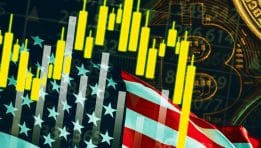The latest data on the S&P 500’s Price-to-Sales (P/S) ratio shows a striking figure: 3.15 for Q2 2025 (estimated), marking one of the highest readings in modern market history. This metric, which compares the market capitalization of index constituents to their trailing twelve-month sales, now stands nearly double its historical median of 1.60. For investors, the question is unavoidable: are we paying far too much for each dollar of revenue, or are current market conditions fundamentally different from the past, making such valuations reasonable?
Historical Context: From Undervaluation to Record Highs
A review of the past 25 years reveals a market prone to valuation cycles. At the peak of the dot-com boom in late 2000, the P/S ratio reached 1.77 before collapsing to 1.17 in the aftermath. The global financial crisis pushed it to an even lower 0.80 in early 2009, reflecting widespread pessimism and compressed valuations. Since then, the trend has shifted dramatically. Post-2012, the ratio climbed steadily, with an acceleration after 2018 fueled by historically low interest rates and a tech-driven bull market. In 2021, it surpassed 3.0 for the first time before a pullback during the 2022 correction. The latest rebound to 3.15 reignites the debate over sustainability.
The Bearish Perspective: Warning Signs of Overvaluation
Critics see the current P/S level as a red flag, signaling stretched valuations disconnected from underlying fundamentals. While the Price-to-Earnings (P/E) ratio can be distorted by temporary earnings swings or accounting adjustments, the P/S ratio focuses on sales, a figure harder to manipulate. The fact that investors are willing to pay over three times a company’s annual revenue raises the risk of sharp multiple compression if revenue growth falters. Historical parallels — from 2000’s tech collapse to the 2021 post-pandemic selloff — suggest that lofty valuations often precede significant downturns. Add in macro headwinds like slowing global trade, elevated geopolitical tensions, and tighter credit conditions, and the bearish case gains further weight.
The Bullish Counterargument: A Transformed Market Landscape
Proponents of current valuations argue that the S&P 500’s sector composition has evolved in ways that justify higher ratios. Technology, healthcare, and communication services — sectors characterized by high profit margins, recurring revenue streams, and scalable business models — now dominate the index. A software company generating 30% net margins can sustain a much higher P/S than a traditional industrial firm. Furthermore, secular growth drivers such as artificial intelligence adoption, renewable energy transition, and demographic healthcare demand support a narrative where the future revenue potential is substantially higher than the past. From this viewpoint, the elevated P/S ratio reflects an economy increasingly centered around high-value intellectual property and less reliant on tangible assets.
Macro Factors: The Interest Rate and Liquidity Effect
Monetary policy plays a critical role in valuation frameworks. The ultra-low interest rate environment of the past decade increased the present value of future cash flows, encouraging investors to accept higher valuation multiples. Even with rates elevated since 2022, expectations of future rate cuts could underpin current levels. Ample liquidity from institutional investors, coupled with the growth of passive investing, also exerts upward pressure on valuations — a structural change that some believe makes historical comparisons less relevant.
Risks of Complacency
Despite these arguments, the risk of complacency looms large. A deterioration in earnings forecasts, unexpected inflationary spikes, or geopolitical shocks could rapidly shift sentiment. High valuations amplify downside risk, as investors have less margin for error. For active managers, this environment demands rigorous stock selection and a focus on companies with demonstrable pricing power and resilient revenue streams.
Looking Ahead: Inflection Point or New Normal?
The S&P 500’s Price-to-Sales ratio at 3.15 places the market in rarefied territory. Whether this is a justified re-rating based on structural economic shifts or a speculative overshoot remains the central debate. Bulls see an innovation-led economy warranting premium multiples; bears see a classic setup for mean reversion. The resolution will hinge on the pace of revenue growth, sector performance, and macroeconomic resilience. For now, the data tells a clear story: the market is historically expensive — and both optimism and caution have a compelling case.
Comparison, examination, and analysis between investment houses
Leave your details, and an expert from our team will get back to you as soon as possible
* This article, in whole or in part, does not contain any promise of investment returns, nor does it constitute professional advice to make investments in any particular field.
To read more about the full disclaimer, click here- Articles
- •
- 8 Min Read
- •
- ago 5 minutes
 DENMARK’S ORSTED PLANS TO RAISE $9.4 BILLION IN RIGHTS ISSUE
DENMARK’S ORSTED PLANS TO RAISE $9.4 BILLION IN RIGHTS ISSUE
Ørsted’s Ambitious Capital Raise to Drive Renewable Growth Ørsted, Denmark’s leading energy company, has announced plans to raise $9.4 billion
- ago 5 minutes
- •
- 8 Min Read
Ørsted’s Ambitious Capital Raise to Drive Renewable Growth Ørsted, Denmark’s leading energy company, has announced plans to raise $9.4 billion
- Articles
- •
- 9 Min Read
- •
- ago 31 minutes
 HEDGE FUNDS FLIP ON GREEN ENERGY AND START BETTING AGAINST OIL
HEDGE FUNDS FLIP ON GREEN ENERGY AND START BETTING AGAINST OIL
The Shift of Hedge Funds Towards Green Energy Investments In recent years, investment strategies—particularly among hedge funds—have undergone a significant
- ago 31 minutes
- •
- 9 Min Read
The Shift of Hedge Funds Towards Green Energy Investments In recent years, investment strategies—particularly among hedge funds—have undergone a significant
- Articles
- •
- 5 Min Read
- •
- ago 1 hour
 Top-Performing S&P 500 Stocks of 2025: Strategic Lessons for Investors
Top-Performing S&P 500 Stocks of 2025: Strategic Lessons for Investors
The year 2025 has proven to be one of the most diverse in terms of growth drivers for the U.S.
- ago 1 hour
- •
- 5 Min Read
The year 2025 has proven to be one of the most diverse in terms of growth drivers for the U.S.
- Articles
- •
- 8 Min Read
- •
- ago 3 hours
 A High-Stakes Week for Markets: Inflation Data, Key Earnings, and Macro Signals
A High-Stakes Week for Markets: Inflation Data, Key Earnings, and Macro Signals
A High-Stakes Week for Markets: Inflation Data, Key Earnings, and Macro Signals Investors are heading into one of the most
- ago 3 hours
- •
- 8 Min Read
A High-Stakes Week for Markets: Inflation Data, Key Earnings, and Macro Signals Investors are heading into one of the most












